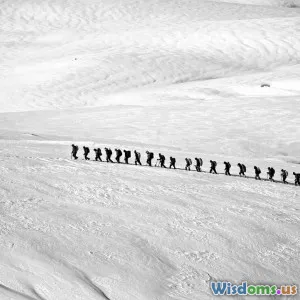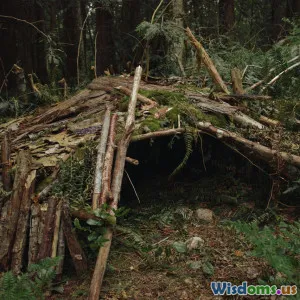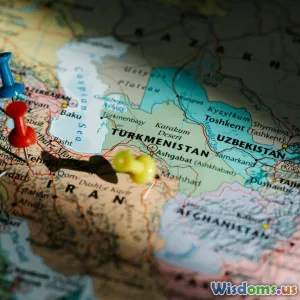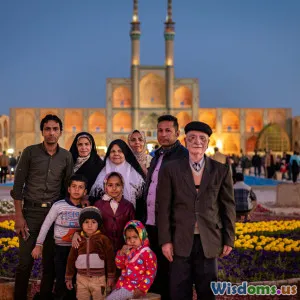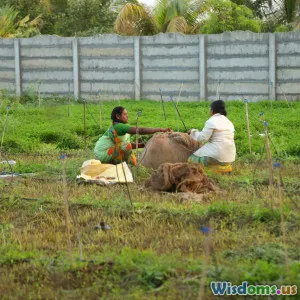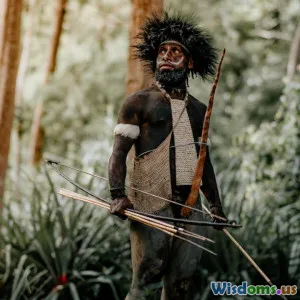
Kayaking the Amazon Alone What I Learned From the Rainforest
10 min read An immersive solo kayaking journey through the Amazon rainforest revealing survival lessons, nature's secrets, and profound personal transformation. (0 Reviews)
Kayaking the Amazon Alone: What I Learned From the Rainforest
Introduction
Embarking on a solo kayaking expedition through the Amazon rainforest is not just an adventure—it's a profound journey into one of the planet’s most intricate ecosystems and deepest recesses of self-awareness. With its winding rivers, towering trees, and teeming biodiversity, the Amazon challenges both body and mind. My journey alone on the mighty Amazon River offered lessons about resilience, environmental stewardship, and the interconnectedness of life that are simply impossible to find in any guidebook.
This article explores my solitary voyage through remote waterways, the physical and mental challenges I faced, the staggering biodiversity I witnessed, and how the rainforest reshaped my understanding of nature and myself.
Setting Forth on the Amazon: Preparing for the Unknown
Planning and Precautions
Kayaking the Amazon alone necessitated meticulous planning. The river spans roughly 4,000 miles, with portions varying drastically in current speed, wildlife density, and local human activity. Before departure, I invested months acquiring advanced survival training, studying topographic maps, understanding tides and weather patterns, and consulting with indigenous communities.
A GPS device and emergency satellite phone were my lifelines amidst the dense canopy and uncharted tributaries. I also ensured my equipment included waterproof storage, mosquito nets, and a reliable water filtration system suited to Amazonian waters – critical since the river naturally contains organic sediments that require removal to avoid illness.
Physical Conditioning
Kayaking solo requires exceeding average physical fitness due to long hours of paddling against currents and navigating obstacles like submerged logs and narrow channels. Training involved daily rowing, strength conditioning, and endurance runs, building stamina necessary for continuous exertion over weeks.
Preparing mentally was equally vital. Solo adventuring means long stretches of silence, unexpected risks, and complete reliance on one’s own decisions — conditions that sharpen focus but can test emotional fortitude.
Navigating the Heart of the Amazon Rainforest
The River as a Living Entity
Early into the journey, it became clear the Amazon River is less a static body of water and more a dynamic force influenced by seasonal floods and droughts. At flood peak, the forest itself becomes submerged, creating a unique habitat where fish swim among tree limbs. To navigate this changing environment, I adjusted my travel schedule and route frequently, guided by local fishermen’s wisdom.
For example, during the rainy season, certain channels opened, allowing passage that would be impossible during dry spells. Attempting to navigate these without proper understanding could have stranded me for days.
Wildlife Encounters: Awe and Respect
The biodiversity of the Amazon is staggering: from elusive jaguars and giant river otters to hundreds of bird species and countless insects. One memorable encounter was with a family of pink river dolphins. I had anchored to rest when one approached curiously, surfacing near my kayak. Their playful intelligence is well documented, yet experiencing it firsthand stirred a deep respect.
Conversely, encounters with caimans and venomous snakes reinforced the importance of vigilance. Understanding animal behavior was crucial not only for safety but also to avoid unnecessary disruption of fragile habitats.
Lessons in Silence and Observation
Forced solitude meant long hours observing subtle shifts: a bird’s call signaling impending rain, changes in water color indicating sediment movement, or the complex markings of tree bark telling stories of age and adaptation. These observations sharpened my environmental awareness—an essential skill when roads or help were unreachable.
Adapting to Isolation
Isolation brought internal challenges. The rainforest’s dense canopy often reduced visibility to a few meters. At times, nights felt endless with eerie sounds from insects and amphibians. I learned techniques such as mindful breathing and establishing routine rituals to maintain psychological balance.
The mental shifts were profound; I stopped perceiving myself as separate from nature and instead became attuned to its rhythms. This included respecting local customs where I occasionally stopped near villages of indigenous people, who taught me invaluable knowledge about edible plants and sustainable living.
Survival Lessons from the Jungle
Mastering Hydration and Nutrition
Though the Amazon River is immense, its water requires treatment to eliminate parasites and bacteria. I used a multi-stage filtration system combining ceramic filters and UV sterilization that allowed safe consumption. Additionally, harvesting rainwater in tarps supplemented needs during river fluctuations.
Feeding myself relied on a mix of dehydrated provisions packed from home and locally sourced foods. Learning to identify safe fruits and plants—such as tucuma palms and cupuaçu—prevented nutritional deficiencies and allowed me to interact sustainably with the environment.
Shelter and Weather Management
The rainforest’s weather is a paradox: fiercely hot by day, surprisingly cold and damp at night due to dew and canopy influence. I fashioned a portable tarp shelter camouflaged to avoid insect attention, elevating it on natural supports when possible to reduce insect mortality.
Heavy rains resulted in swift runoff and rising water levels, occasionally forcing detours. Recognizing these environmental cues prevented hazardous scenarios such as flash floods.
Dealing with Injury and Health Risks
Minor injuries, insect bites, and the risk of tropical diseases such as malaria demanded preparedness. My first aid kit included treatments for venomous bites, antiseptics, and antibiotics. I was also vaccinated and carried a mosquito net and insect repellent containing permethrin.
No serious incidents occurred, but the claustrophobic environment of a canopy-swathed river left little margin for error.
Spiritual and Ecological Insights
Connecting with the Rainforest’s Pulse
Days turned into weeks, and kayaking became a flowing meditation. The jungle’s language—water currents, bird songs, swaying branches—became clearer. This connection fostered deep respect for the Amazon’s millions of species and intricate ecosystems.
John Hemming, a renowned Amazon scholar, once said: “The rainforest teaches humility.” Living this truth, I felt my ego dissolve spectacularly as every challenge was met with nature’s uncompromising rules.
The Amazon’s Ecological Crisis
During occasional radio check-ins with conservationists, I learned that despite its vastness, the Amazon is under threat from deforestation, mining, and climate change. Satellite data confirms an alarming rise in the “arc of deforestation” on the forest’s edges.
Experiencing the rainforest’s raw vitality firsthand inspired me to advocate more strongly for its protection. Every splash from my paddle symbolized the delicate balance of this ecosystem.
Transformational Growth
The solo kayak expedition transformed my perspectives on solitude, resilience, and conservation. Returning home, I carried an increased commitment to sustainable living, awareness of indigenous knowledge systems, and a heartfelt message: the Amazon’s survival is inseparable from humanity’s future.
Conclusion
Kayaking alone through the Amazon rainforest was a transformative journey that tested physical endurance, mental resilience, and spiritual openness. From survival skills like water purification and shelter building to intimate moments with extraordinary wildlife, the expedition revealed deep lessons about our place within nature.
The experience taught me that respecting and understanding nature’s complexity is essential—not only for survival but to inspire global efforts to preserve this irreplaceable ecosystem. For those drawn to the humbling power of the rainforest, the Amazon offers adventure, education, and profound growth.
As environmental challenges mount, embarking on such explorations—physically or through stories—may be the key to fostering the empathy and action needed to protect Earth’s lungs for generations to come.
References and Further Reading:
- Johnston, M., The Amazon Rainforest: A Cultural History (2018).
- Smithsonian Tropical Research Institute, Amazon Biodiversity Report (2022).
- Hemming, J., Amazon Frontier: The Defeat of the Brazilian Indians (1987).
- World Wildlife Fund, Amazon Threats Assessment (2023).
Rate the Post
User Reviews
Popular Posts











